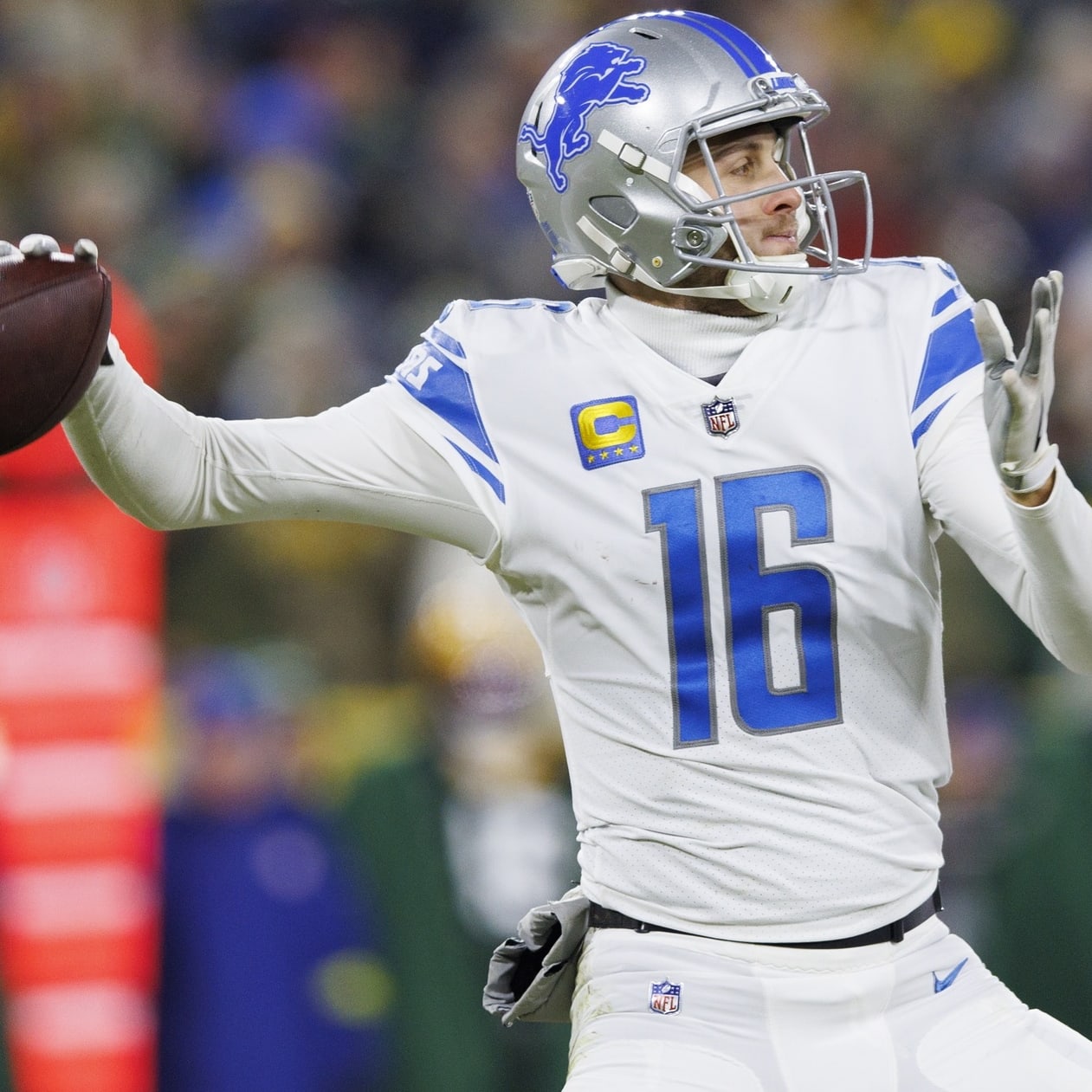This article is part of our Football Draft Kit series.
Economists have been concerned with tracking inflation since the Middle Ages, as it's a metric that can help gauge the purchasing power of consumers. Those in government and financial planning can make a career out of tracking and predicting inflation, as it comes with many real-life consequences, both positive and negative.
In the world of fantasy football (even moreso in baseball), the term might get floated around if your league conducts an auction draft. What exactly does this term mean in the context of fantasy sports, and how can it prove useful in draft preparation? That's exactly what we're here to find out.
The great majority of keeper and dynasty formats attach some sort of consequence for keeping a player, ensuring a fair amount of star power remains in the player pool each season. In a traditional snake draft, a keeper typically comes with a draft pick penalty, and it's not uncommon to see that penalty increase every year a player is kept. Auction drafts, on the other hand, are a completely different ball game. Here, the typical penalty for keeping a player is that his purchase price (sometimes called "salary") is removed from an owner's starting budget on draft day. Dynasty formats often require contracts, where a player's "salary" increases at a certain rate, making him tougher and tougher to keep each season.
In any draft, fantasy owners are always on the hunt for value. The perfect keeper is a player bought at a low price, or drafted in the later rounds the year before. For example, I wasn't all that impressed with the Arizona running back situation last season, so I snagged rookie David Johnson for $2 at the end of last year's draft, and waited patiently for the young player to reach his potential. Now, instead of paying RotoWire's projected PPR value of roughly $57 on a $200 budget, I get David Johnson this year for a cool two bucks. Other examples of strong keepers in that particular league are Allen Robinson ($17), Todd Gurley ($16), Devonta Freeman ($4) and Jordan Reed ($1), all of whom check in immensely under their projected value, sometimes by $30 or more.
Whether an owner gets a tremendous bargain or just a slight one, an effect that cannot be ignored happens here: inflation. A noteworthy portion of the player pool is taken off the board heading into draft day, yet owners still have their entire starting budget to work with, minus the cost of keepers. As a result, there is more money available for a talent pool that is already slightly depleted. When valuable keepers are taken out of the mix, the value of the remaining players, especially those in the top tiers, becomes "inflated."
Let's look at a real-life example, using one of this year's top projected players in PPR formats: Antonio Brown. In a 12-team, PPR league that starts three wide receivers, Antonio Brown's projected auction value checks in at roughly $57. However, this value needs to be adjusted due to to the keepers that come off the board. Since there is less talent out there, Brown's price should be more, but how much more?
To find out, owners need to calculate what I like to refer to as an "inflation index" for their league. There are many highly advanced ways to calculate this, but a relatively simple version can be calculated manually, and I'll list the steps here:
1. Determine the total money available in your league, before keepers are accounted for. This part is simple: just take the number of teams and multiply by the starting budget. In the league I referred to above, this number is $2,400 (12 teams x $200/team).
2. Add up the total cost of keepers in your league. Sticking with the example above, the 24 players kept in my league accounted for a total of $310.
3. Calculate the remaining available budget. To do this, just subtract the cost of the keepers from the amount calculated in step one. In this example, it's $2,090 ($2,400 - $310).
4. Things start to get tricky here, as owners will next have to calculate the "value" of their keepers. One easy way to do this is to enter your league's settings in the RotoWire Draft Software, or our Custom Auction Values Generator, and use those. Not everyone will agree with the entirety of a projections set, however, so some owners may choose to manually adjust those values. In the example we're using, we'll say the 24 players kept were actually worth $705.
5. Now, we calculate the "remaining value." Just take the total "value" available ($2,400) and subtract the keeper value ($705). As a result, we find there is $1,695 of remaining value in the player pool.
6. For the last step, take the remaining available budget and divide it by the remaining available value to calculate the "inflation index." Sticking with this example, that number turned out to be 1.233 ($2,090/$1,695)
To help our readers, I created a Google Doc that can be copied pasted into any spreadsheet, which features a template to use, as well as how I did it in the real-life example that I referred to. Note: You may need to re-input the formulas depending on how the data copies and pastes to your spreadsheet software of choice. You can check that out here:
https://docs.google.com/spreadsheets/d/1IUZ2J5792ITVnJCUYDrtZPMC_znUSlaeZ2IDpvk5mrQ/edit#gid=0
So how can we use this inflation index? Going back to Antonio Brown, we previously determined using the RotoWire Draft Software that his price in a standard, redraft league with those specifications (PPR, 3WR, 12 teams) is $57. If we multiply that by the inflation index, however, we get a value of closer to $70. Other owners referring to their own auction tools, or your league's draft room, are likely going to see a price in the $55-60 range, and will stop their bidding accordingly at that point.
Being a savvy owner who calculated inflation index, you'll know better than that, and stop your bidding right around $70. More often than not, you'll likely pay in the $60-65 range as the winner, resulting in approximately $5-10 in "profit" that the rest of your league missed out on. Granted, you probably won't be keeping Brown at $65 next season, but you still just secured a superstar for your team. If you entered the year with only middle-tier bargains as keepers, securing at least one of these players is arguably vital to the success in your upcoming season. Failing to do so is almost like throwing away your first-round pick in a snake draft.
Many owners might be scared to pay inflation-adjusted prices for a single player, but those same owners that think they're smart by saving their money will eventually have to pay up. They are almost certain to end up in a bidding war for a lesser-quality player later in the draft, as other owners begin to realize that the talent is about to dry up.
In my draft last weekend, Ameer Abdullah went for an outrageous $30 late in the draft, perfectly illustrating this effect. Granted, I like Abdullah a lot this year, but for comparison's sake, he cost me just $9 in our Steak League Draft the week before. That same $30 could have bought C.J. Anderson, Eddie Lacy, DeMarco Murray or Carlos Hyde earlier in this draft.
On my side of things, I bought Lamar Miller ($55), Mike Evans ($43) and Greg Olsen ($20) for just within my inflation-adjusted prices. Mix that with my keepers of David Johnson ($2) and Odell Beckham Jr. ($52), and I clearly exited the draft with the best starting lineup. My depth may have suffered a bit, but in a 12-team format, there are plenty of $1 players to be had at the end of the draft who can serve as a suitable backups. If there were 14 or 16 teams, I would have likely elected to aim for more balance. My bench happens to feature Phillip Dorsett, Terrance Williams, Austin Seferian-Jenkins, Josh Ferguson, Chris Thompson and Chris Johnson (David's handcuff) -- all for $2 or less. The waiver wire will also have plenty of talent emerge on which I can spend my $100 FAAB budget.
Now, there are limitations to using this exact method. First and foremost, it does not account for positional scarcity. For example, if 12 running backs and only eight wide receivers are kept, the inflation index will be higher for running backs than it is for wide receivers. This can still be calculated, position-by-position, using the steps above, but it will require a bit more number crunching. You'll need to determine the remaining available budget for each position, as well as the keeper value for each position. The percentage of the total budget allocated for each position will need to be calculated to get your starting budget, but using the previous year's auction data would be a good start.
Another major limitation is that as soon as the draft begins, the number you calculated for the inflation index will change ever so slightly with each player drafted. Every time a player is purchased for under your projected "value," the inflation index will increase. Each player that is purchased for over your projected "value" will cause the index to decrease.
Lastly, using a percentage-based inflation index can be a bit risky, as a larger percentage of the extra available budget will end up being delegated to top players such as Brown. When preparing for my draft, I only applied the index to roughly the top 30-40 players -- guys that would likely be taken in rounds 1-3 in a snake draft. As I moved to the bottom of my cheat sheet, I knew there was still inflation to some degree, but not the 20-plus percent I originally calculated.
It's nearly impossible to recalculate for every player who comes off the board, but using the originally calculated inflation index will provide you with a baseline that gives you a head start in your draft. Who knows, you might even end up with three first-round picks.












